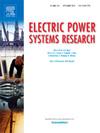综合输配网络中频率安全单元承诺的双层分布式调度框架
IF 4.2
3区 工程技术
Q2 ENGINEERING, ELECTRICAL & ELECTRONIC
引用次数: 0
摘要
大规模可再生能源进入电力系统对电网惯性和频率稳定性提出了重大挑战,这在历史上一直是由同步发电机维持的。为了解决这些问题,本文提出了一种暂态频率安全约束单元承诺(TFSC-TDUC)模型,其目标是在耦合传输和主动配电网络之间分配可调度资源。通过将暂态频率安全约束纳入传统的机组承诺框架,所提出的模型通过利用热电机组、可再生能源(RESs)和储能系统(ess)的频率调节能力来增强电网的稳定性。引入协调优化策略,激励分布式能源参与辅助调频,从而提高运行效率。为了求解该模型,采用二阶Taylor展开和Big-M方法对非线性频率约束进行线性化,将该问题转化为混合整数线性规划(MILP)公式。此外,采用steffensen加速异构分解算法(SA-HGD)来提高计算性能。实例研究表明,该模型有效地协调了耦合输配(CTD)网络中的资源,减轻了热电机组的运行负担,同时改善了暂态频率响应。结果表明,该模型不仅保证了频率安全,而且实现了较高的经济效益,可在可再生能源渗透率较高的情况下实现电网的可靠运行。本文章由计算机程序翻译,如有差异,请以英文原文为准。
A dual-layer distributed dispatch framework for frequency-secure unit commitment in integrated Transmission–Distribution networks
The penetration of large-scale renewable energy into power systems poses significant challenges to grid inertia and frequency stability, which have historically been maintained by synchronous generators. To address these issues, this paper proposes a Transient Frequency Security-Constrained Unit Commitment (TFSC-TDUC) model, whose objective is to allocate dispatchable resources across coupled transmission and active distribution networks. By incorporating transient frequency security constraints into the conventional unit commitment framework, the proposed model enhances grid stability by harnessing the frequency regulation capabilities of thermal units, renewable energy sources (RESs), and energy storage systems (ESSs). A coordinated optimization strategy is introduced to incentivize distributed energy resources to participate in auxiliary frequency regulation, thereby improving operational efficiency. To solve the model, the nonlinear frequency constraints are linearized using second-order Taylor expansion and the Big-M method, transforming the problem into a mixed-integer linear programming (MILP) formulation. Furthermore, the Steffensen-accelerated heterogeneous decomposition algorithm (SA-HGD) is employed to enhance computational performance. Case studies demonstrate that the TFSC-TDUC model effectively coordinates resources in coupled transmission and distribution (CTD) networks, alleviating the operational burden on thermal units while improving transient frequency response. The results confirm that our proposed model not only ensures frequency security but also achieves high economic efficiency, enabling reliable grid operation under high renewable energy penetration.
求助全文
通过发布文献求助,成功后即可免费获取论文全文。
去求助
来源期刊

Electric Power Systems Research
工程技术-工程:电子与电气
CiteScore
7.50
自引率
17.90%
发文量
963
审稿时长
3.8 months
期刊介绍:
Electric Power Systems Research is an international medium for the publication of original papers concerned with the generation, transmission, distribution and utilization of electrical energy. The journal aims at presenting important results of work in this field, whether in the form of applied research, development of new procedures or components, orginal application of existing knowledge or new designapproaches. The scope of Electric Power Systems Research is broad, encompassing all aspects of electric power systems. The following list of topics is not intended to be exhaustive, but rather to indicate topics that fall within the journal purview.
• Generation techniques ranging from advances in conventional electromechanical methods, through nuclear power generation, to renewable energy generation.
• Transmission, spanning the broad area from UHV (ac and dc) to network operation and protection, line routing and design.
• Substation work: equipment design, protection and control systems.
• Distribution techniques, equipment development, and smart grids.
• The utilization area from energy efficiency to distributed load levelling techniques.
• Systems studies including control techniques, planning, optimization methods, stability, security assessment and insulation coordination.
 求助内容:
求助内容: 应助结果提醒方式:
应助结果提醒方式:


